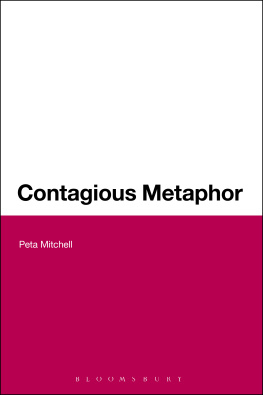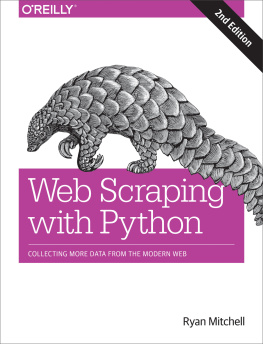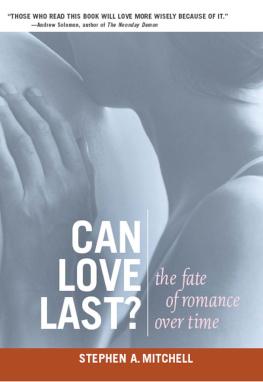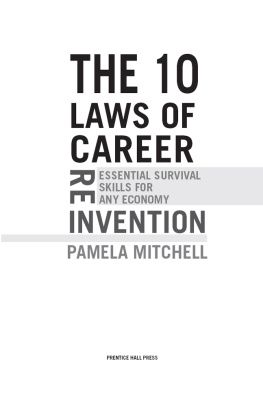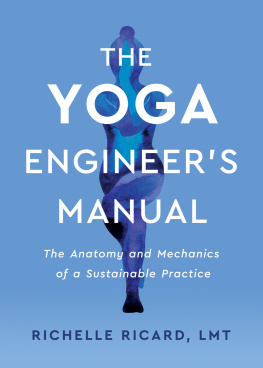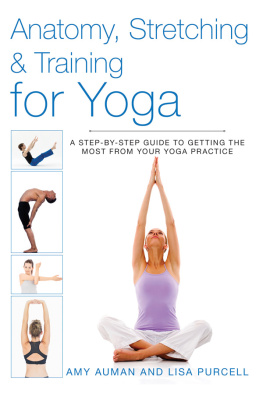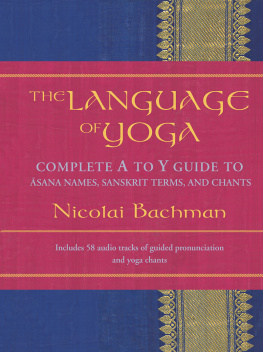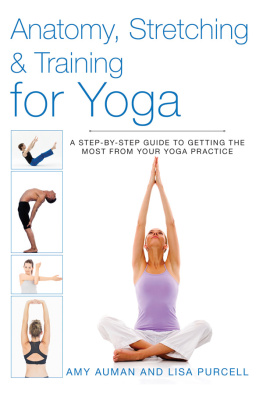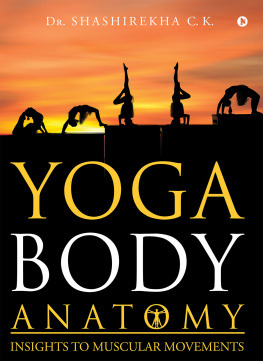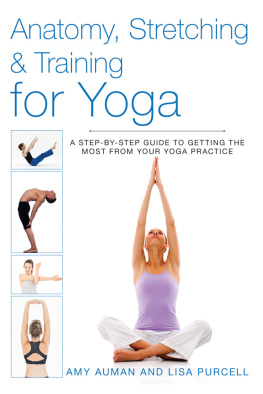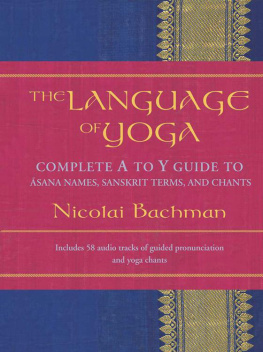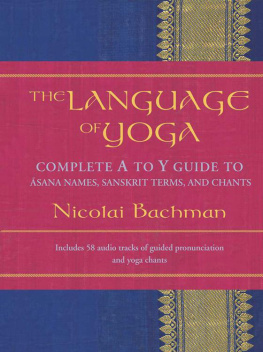Contents
Guide
Page List
The final copy of this book is not what I thought it would be when I started. As I answered questions, more would arise, and brief moments of understanding led me down a longer path of more questions. Curiosity slowed me down, but the people in my life kept me going.
For the ability to be ever inquisitive, I thank my late parents who showed me the value of education and the dedication it requires. My father was an engineer who instilled in me a love of math, physics, and design. My mother was a university professor and author who showed me what life as a researcher, writer, and teacher is like. I am keenly aware of how their combined influence is abundantly apparent in my work.
My professors over the years (and years) I was in school further nourished my love of education. First and foremost is Dr. Jill Crussemeyer, who gave me the freedom to explore beyond the rote curriculum in my graduate program. She saw what was ahead of me when I didnt and offered me the road map. Dr. Brigitte Waldorf invited me to do graduate work when I was still an undergraduate. She also saw where I was going, before I did, and showed me the way. A humanities professor gave me philosophical insight into what calculus was, and a math professor explained calculus as a philosophy. At every academic turn, I was always encouraged to explore both the contemplative arts and hard sciences.
Thank you to all my yoga teachers over the years, who are far too many to list here. Leeann Carey showed me the value of intuition and taught me what is, in my opinion, the purest form of yoga there is; no stylistic bias, just yoga. Kathleen Grace Santor ran her yoga school with the most integrity Ive seen thus far, she set the bar for me on day one. Every teacher I have ever had, including those whose class I may have only taken once, have all contributed to my ideas today. To every friend or colleague willing to talk shop with me and swap ideas, even when we disagree, and every teacher who has attended my courses and challenged me with questions, you remind me that Im not alone in the quest for knowledge.
Tony Berlant, my friend, coach, and editor. Without him, this book would never have been written; even though he will deny it. When I was so lost in my ideas I couldnt see a single step ahead, we would meet over coffee and he would ask me where I wanted to go. His probing questions would get me excited again, and before long Id be yelling my ideas at him. Apologies to everyone at Starbucks who was forced to hear about the state of yoga today.
And most importantly, I give love and thanks to my family. My partner Jeff Homolya gave me the space to complete this monster of a project. He took less of me, so I could get it done, at a time when he needed more of me. I love you and always will. To my sister Marla, my rock, my best friend, my other half, thank you for taking me in and letting me be me; having you as my sister is the greatest privilege of my life. Lastly, to GOB, our beloved cat who slept endlessly on my stacks of research; he eventually died, perhaps of boredom, the week before I submitted the manuscript. When I was fretting over deadlines and word counts, his presence reminded me that the book would be complete when it was complete.
Jules Mitchell
The series of postures contained in the appendix are intended to provide a framework by which a yoga teacher might utilize yoga asana to increase capacity. The goal of increasing capacity, however, does not automatically imply that capacity is in some way diminished and must be reinstated. It also does not imply that yoga alone can provide the load parameters necessary to sufficiently promote positive tissue adaptation. Exposure to load is dose dependent and its effect will depend greatly on the practitioner, her biology, and her loading history. In the absence of research on tissue mechanics specific to yoga, all we can do is apply the available evidence to the way we teach. I have compiled for you here some of my own approaches to instructing asana with the goal of increasing ones tolerance to load.
The series of poses to follow are categorized by specific anatomical regions. They serve as models for you to develop your own series of poses for the same regions or different regions altogether. The first series is a bit more comprehensive than the two series which follow it, and deliberately so. It is my intention for you to come up with even better pose progressions and variations than I have provided, particularly as you navigate through the appendix. If you have read the book, and embraced its message, I challenge you to draw on your previous knowledge of yoga poses and combine it with your new-found knowledge of tissue mechanics to develop your own series. If you have not yet read the book, or perhaps want to review it a few more times before embracing the message, you may reference the series in the interim. I find that when given the educational foundation provided here, most yoga teachers quickly discover how to adapt the cues they already use and the poses they already teach. This improves their teaching skills and student loyalty base through the ability to make a profound difference in how their students experience yoga.
Modifying Loads for the Proximal Hamstring Tendon
The following series is suggested for yoga practitioners wishing to increase proximal hamstring tendon capacity. As outlined in the text, the specific, variable, and progressive loading parameters are intended to optimally load as best we can using only our body weight. In cases where a students hamstrings might be underloaded, we wish for the series to provide a protective effect against future possible hamstring aggravation. In other cases, the series may serve students who have returned to yoga after rehabbing a proximal hamstring tendinopathy but might still be in the time window where an emphasis on increasing capacity is essential.
The suggested isometric hold time for each pose is 3045 seconds. If you are working toward substantially increasing capacity, then 5 isometric repetitions (reps) are recommended, allowing for 2 minutes rest in between reps. One should progress only when ready, when the suggested 3045 second holds are sustainable, meaning it might take months for some of the later progressions to become appropriate. If considering the injury recovery timeline as a model for tissue adaptation, remember it could even take 13 years for capacity to substantially increase. Patience and adherence (i.e. no large gaps in loading periods) are crucial. If increasing loads are introduced too quickly and symptoms present, resting for a few days is suggested before resuming with a regression. If symptoms persist, a referral to a qualified healthcare professional is recommended.
When trying to incorporate elements of the series into a yoga group class setting, creative sequencing might utilize the rest period by loading a different muscle group in a different type of pose. For example, certain standing poses or poses bearing weight on the arms might give the hamstrings a rest between reps. Stretching between reps is not necessary, nor is it encouraged. If the series is followed sequentially, loading will, eventually, occur closer to the end range positions, introducing tension at a lengthened hamstring.
The Hamstring Bridge
Because Bridge Pose is often practiced as a replacement for Upward Facing Bow Pose, the emphasis tends to be on spinal extension. In this variation, the emphasis is on the posterior hip muscles and less on the paraspinal muscles.
Action/skill to bias the posterior hip
From the back of the knee, reach from the top of the calves toward the heel and into the floor. Maintain that action and also reach from the bottom of the hamstring up to the sitting bone. Cultivating a


